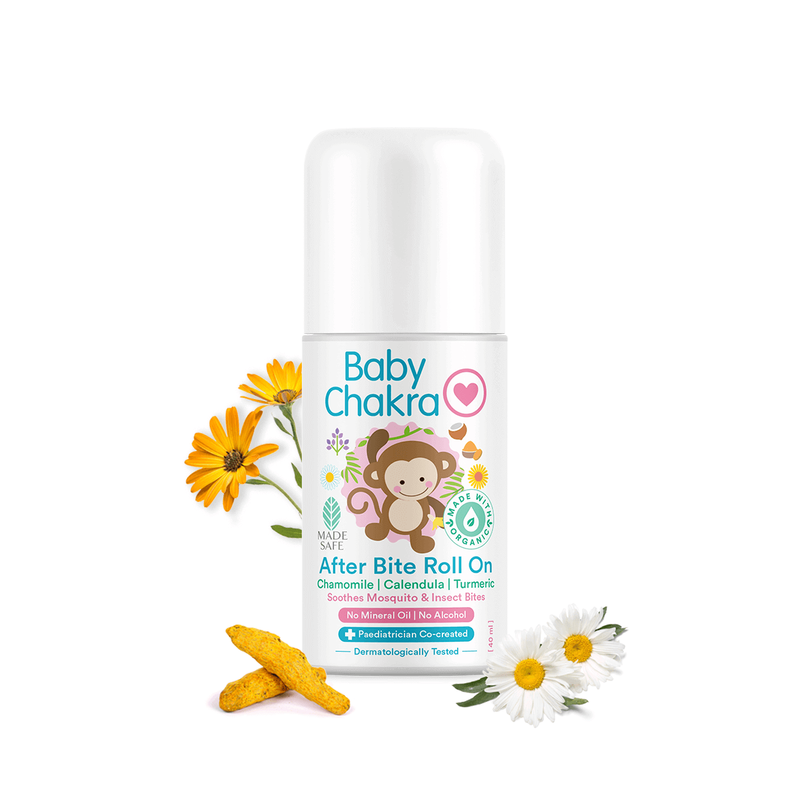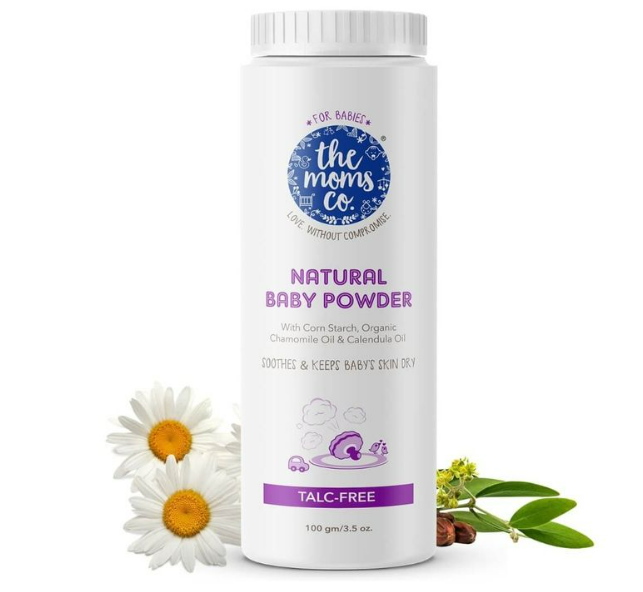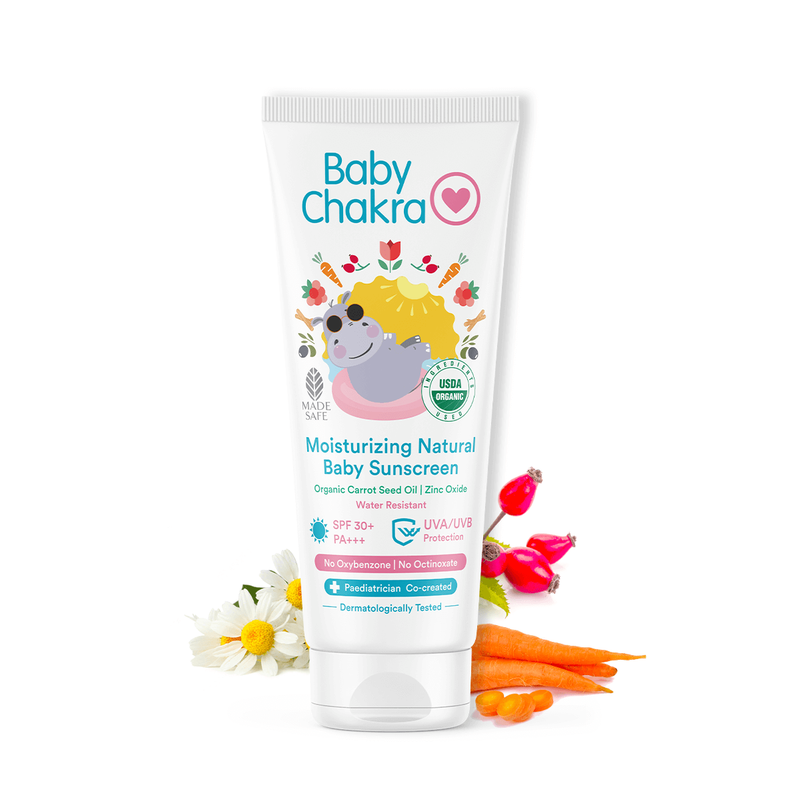
Common Outdoor Rashes In Children And Ways To Prevent Them
24 Jun 2022 | 6 min Read
Reema Shah
Author | 740 Articles
It is common for children to develop rashes and it is normally not a matter of concern. These common rashes usually disappear on their own. They do not require treatment, except for some after-bite roll-on or cream to soothe the itching.
However, if your child has a rash accompanied by fever or uneasiness, it is advisable to consult a doctor. Read on to know more about the most common outdoor rashes in children.
What Are Outdoor Rashes In Children?
Also known as dermatitis, rashes cause irritation and puffiness. These rashes may appear as pimples, bumps, blisters, or lumps. Outdoor rashes in kids may be caused either due to sunburn, allergic reactions to certain plants, weather conditions, or insect and mosquito bites If your child’s rash is accompanied by fever it requires immediate medical attention.
Common Types Of Outdoor Rashes
1. Hand, foot, and Mouth Disease
Hand, foot, and mouth disease is a viral illness that is more common during summer and early fall. This outbreak is most common in younger children and can spread from childcare centres, preschools, and centres that hold summer camps.
The illness begins with a sore throat, fever, and runny nose which is similar to the common cold. However, it is also accompanied by a rash with tiny blisters and may appear on any area of the body or in these places:
- Mouth area including gums, inner cheeks, back of the mouth or sides of the tongue
- Feet soles
- Palms of the hands or fingers
- Buttocks
2. Heat Rash
Heat rash is also commonly known as prickly heat and is common in babies and young children. It happens when the sweat gland pores are blocked. The rash appears like red bumps or patches of small pink blisters and can be seen in areas where the skin tends to fold. These areas include the thighs, neck, elbows, or armpits. However, heat rash can occur in other covered areas too. One way to prevent heat rashes is by keeping your little one’s skin sweat and moisture-free. you can invest in a natural talc-free powder formulated with plant-based ingredients like chamomile oil, calendula oil, and jojoba oil, which keep your child’s skin dry and also prevent skin infections and rashes.
Besides rashes, the summer heat can also cause sunburn, and it’s advisable to use a baby-friendly and natural sunscreen for your baby.
3. Eczema
Eczema is a skin condition where the skin has patches of red, dry, and scaly skin Swimming, which is one of the most common activities for toddlers during the summer months can trigger eczema. Overheating and sweating are also major causes of eczema. To soothe your child’s eczema-prone skin, you can invest in a natural sensitive skin lotion, enriched with botanical ingredients like aloe vera gel, calendula oil, and colloidal oatmeal, which soothe inflammation and reduce itching and irritation.
4. Insect Bites and Stings
When stepping outdoors insect bites such as fire ants, bees, wasps, mosquitos and ticks can cause discomfort and itching. In some children, it may also cause a severe allergic reaction called anaphylaxis. This condition includes rash or hives and can even cause airway swelling which can be life-threatening.
5. Poison Ivy and Other Plant Rashes
Many children tend to get a burning sensation and get an extremely itchy rash on the areas where their skin touches certain plants. Some common plants include poison ivy, sumac and poison oak. These plants contain a sticky oil called urushiol.
It may cause the skin to swell, become red and cause blisters There are other plants like wild parsnip, citrus and giant hogweed which contain chemicals that cause a phytophotodermatitis rash and make the skin hypersensitive to sunlight.

Prevention and Treatment Of Rashes
Here are some ways to prevent the most common outdoor rashes:
- Your toddler may be too little to understand what a poisonous plant looks like, you can show him/her and also explain why it is dangerous. Make sure they are well covered when they’re outdoors, especially while camping or hiking.
- For eczema, your child’s doctor may suggest special moisturisers called emollients. Emollients help to retain the water in the skin and keep them soft and smooth while providing relief from the itchy feeling.
- Apply some insect repellent spray on your little one to keep them away from bugs and mosquitoes before they go outdoors. Ask your little one to avoid scratching as the rash may develop into an infection or even a scar. Plus, it will take longer to heal.
- If your child has rashes caused by an allergen, including hives, make sure you consult your doctor. The doctor may test to check which food, medicine, substance, or insect caused the rash or hives in your child.
- Ensure that your child avoids substances which trigger allergic dermatitis or irritant contact dermatitis by letting them know. If your child is allergic to nickel, make them wear only nickel-free jewellery.
- Children with eczema should stay away from harsh soaps that might dry out their skin. Instead, they can use a mild body wash that has moisturising properties and is free from toxins. Give them short and cool showers as hot showers and baths can further dry out their skin.
Since your child’s skin is still tender and delicate, it’s common for him/ her to get certain rashes. Until the rashes are accompanied by fever and tend to be persistent, you need not worry. However, do not use any medications without consulting with a doctor.
DISCLAIMER: We have taken steps to check the accuracy of information & practices shared above; however, it is not a replacement for a doctor’s opinion. Please check with either your doctor, or an expert, before trying any suggestion, practice, or medication mentioned here.
Cover image credit – Children’s Colorado
A


Suggestions offered by doctors on BabyChakra are of advisory nature i.e., for educational and informational purposes only. Content posted on, created for, or compiled by BabyChakra is not intended or designed to replace your doctor's independent judgment about any symptom, condition, or the appropriateness or risks of a procedure or treatment for a given person.




